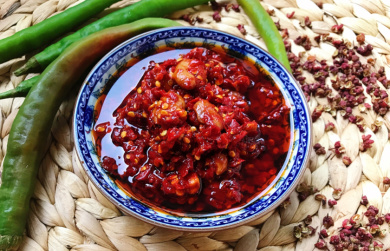Learn how to cook napa cabbage in authentic Chinese recipes
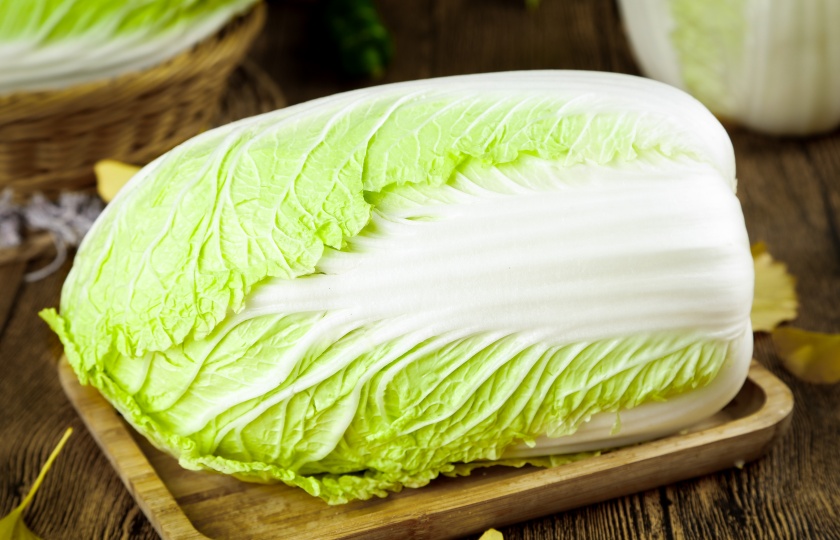
Napa cabbage is a common and familiar ingredient for every Chinese person. It has a sweet, crisp texture and a delicious flavor. Today, I'll be sharing some classic ways to cook Napa cabbage in Chinese dishes!
Napa Cabbage Soup
Ingredients: Napa cabbage, pork ribs, salt, pepper, chopped green onions
Instructions:
Cut the Napa cabbage into segments and prepare the pork ribs. Simmer the pork ribs in advance to make broth.
Heat the broth and add the Napa cabbage segments. Bring to a boil.
Season with salt and pepper to taste, and garnish with chopped green onions before serving.
Stir-Fried Napa Cabbage
Ingredients: Napa cabbage, minced garlic, salt, light soy sauce, cooking oil
Instructions:
Separate the stems and leaves of the cabbage. Slice the stems and tear the leaves into smaller pieces. Wash both thoroughly.
Heat oil in a pan and sauté the minced garlic until fragrant.
First, add the Napa cabbage stems and stir-fry until tender, then add the cabbage leaves and stir-fry quickly.
Add salt and a little soy sauce to season, and stir-fry until the leaves soften. Serve.
Pickled Napa Cabbage
Ingredients: Napa cabbage, salt, high-proof liquor
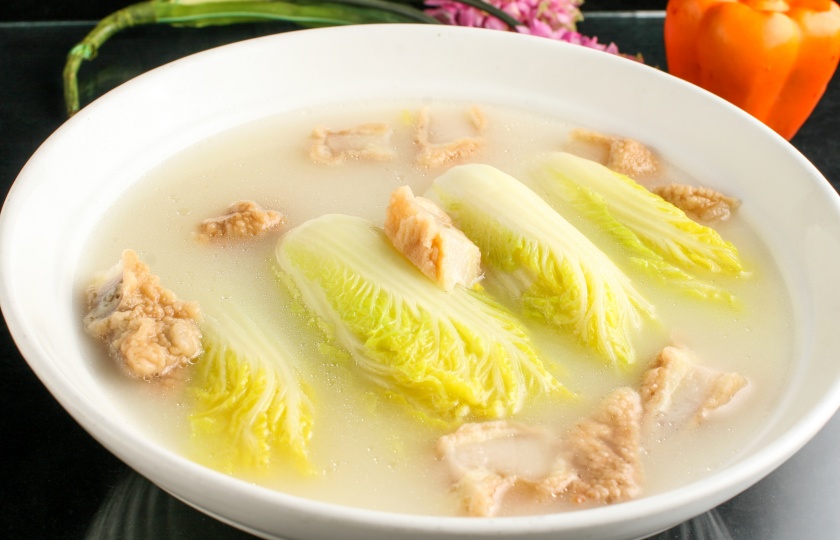
Instructions:
Remove the outer dry leaves of the Napa cabbage, cut it into eight pieces, and place it in a clean, dry container.
Evenly sprinkle salt over the cabbage and let it sit for 2 hours to allow the salt to penetrate.
Squeeze out the excess water from the cabbage and place it in a dry glass jar, pressing it tightly.
Add a small amount of high-proof liquor, shake the jar to disinfect, then pour any liquid released by the cabbage into the jar and press again.
Store in a cool place to ferment. It will start to sour after 7 days, and after 20 days, the flavor will be even better.
Napa Cabbage with Vermicelli
Ingredients: Napa cabbage, vermicelli, pork belly, ginger, green onions, dried chili, light soy sauce, dark soy sauce, salt, chicken essence
Instructions:
Soak the vermicelli in hot water until soft, drain, and add dark soy sauce to color.
Tear the Napa cabbage into small pieces, slice the ginger, and cut the green onions into sections.
Heat oil in a pot and cook the pork belly over low heat to release the fat. Add ginger, dried chili, and green onions to sauté.
Add the Napa cabbage and stir-fry until slightly wilted, then add the vermicelli and hot water. Simmer on low heat for 10 minutes.
Season with salt and chicken essence, then sprinkle with green onions before serving.
Napa Cabbage with Tofu
Ingredients: Napa cabbage, ginger slices, cooking oil, tofu, salt, light soy sauce, white pepper, chopped green onions
Instructions:
Cut the Napa cabbage into segments and tofu into blocks.
Heat oil in a pot and sauté the ginger slices until fragrant, then add the Napa cabbage and stir-fry until softened.
Add enough clear soup or water and add the tofu blocks.
Season with salt, light soy sauce, and a small amount of white pepper, then simmer for 20 minutes until the soup is flavorful. Garnish with chopped green onions before serving.
Chinese Napa cabbage salad
Napa cabbage salad is crisp and refreshing, making it a perfect accompaniment to any meal. It's very easy to make. Here's how:
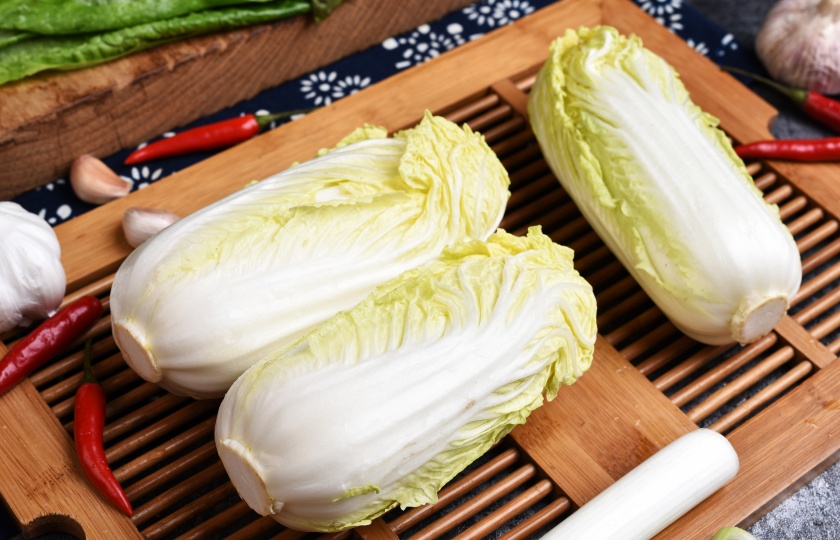
Prepare the Napa Cabbage:
Wash the cabbage thoroughly, remove any old leaves, and cut it into fine strips or small sections. For extra crispiness, soak the cabbage in cold water for 10 minutes before using.
Add Other Ingredients:
Napa cabbage has a mild flavor, so for a more complex taste, you can add shredded carrots, cucumber slices, onion slices, or chopped tomatoes to add color and nutrients.
Seasoning:
The key to a delicious Napa cabbage salad is the dressing. I recommend using olive oil, white vinegar (or lemon juice), honey, salt, and black pepper. Mix well and pour over the salad. Toss to coat evenly.
Add Nuts or Seeds:
For extra texture and nutrition, sprinkle toasted pine nuts, almonds, sesame seeds, or sunflower seeds on top.
Tips:
Choose fresh Napa cabbage for the best crunch. If the cabbage is too mild for your taste, you can add spicy condiments like chili oil or grilling spices to enhance the flavor.
Do you have to wash the inside of napa cabbage?
Yes, it's best to clean Napa cabbage properly before eating. Here’s how to do it:
Preparation:
Select fresh Napa cabbage with green leaves and firm texture.
Prepare a basin of clean water (preferably running water for easier rinsing). Add a pinch of salt to help remove impurities and small insects.
Initial Processing:
Peel off the outermost leaves of the cabbage, which are often dirtier. After removing 1-2 layers, rinse the cabbage thoroughly.
Cut the cabbage in half to make cleaning the inside easier. If needed, cut into quarters.
Soaking and Rinsing:
Soak the cabbage in water with 1-2 tablespoons of salt for 10-15 minutes to help remove dirt and insects.
After soaking, rinse each layer of cabbage under running water. You can peel the leaves apart to clean thoroughly.
Final Check:
After washing, check the cabbage's inner leaves to ensure no impurities remain. If necessary, use a small brush to clean them.
Let the cabbage drain in a colander before cooking.
Tips:
Freshness is key. Choose cabbage with bright green leaves and firm texture.
Don't soak too long to avoid losing nutrients.
Salt water helps remove pesticides but should be used in moderation to avoid affecting the taste.
How to cut napa cabbage for stir-fry?
Cutting Napa cabbage correctly makes it easier to cook and enhances the dish’s presentation. Here's the proper way to cut it:
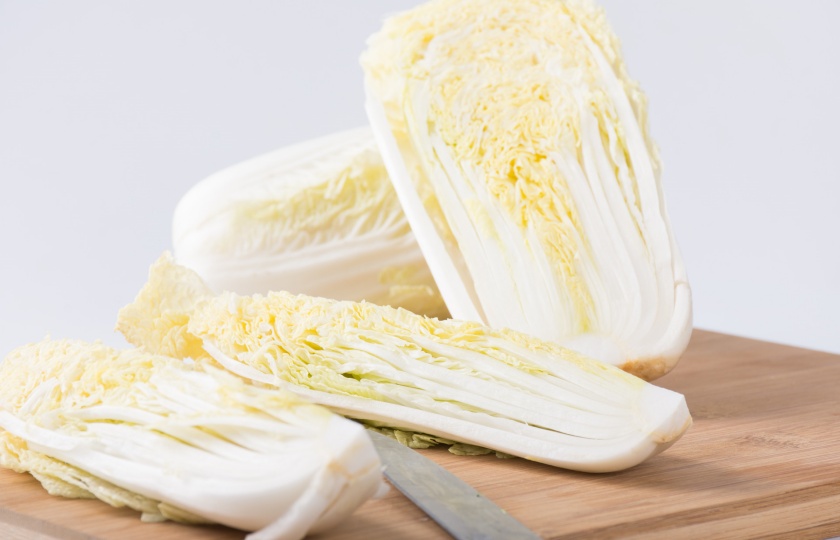
Before Cutting:
Wash the cabbage thoroughly, remove any old leaves, and rinse it well under cold water.
Cutting the Stems:
Cut the cabbage in half, and you'll see the stems and leaves. Since these parts cook at different rates, it's best to cut them separately.
For the stems: Cut them into thin, diagonal slices (about 3-5mm thick) to ensure even cooking and maintain their crisp texture.
For shredding: Cut the stems into thin slices, then stack and slice them into strips, about 5-8mm wide. This works well for stir-frying with meat.
Cutting the Leaves:
Tearing by hand: I prefer tearing the leaves by hand for a more rustic look, which helps them retain a "wok hei" (charred flavor) when stir-fried. Tear the leaves along their natural veins into irregular pieces.
Cutting into pieces: For neater cuts, use a knife to slice the leaves into 3-5cm square pieces. This is ideal for stews or braises, like cabbage with tofu.
Do you cook napa cabbage the same as regular cabbage?
Cooking Napa cabbage and regular cabbage shares some similarities but also has key differences:
Similarities:
Both need to be cleaned before cooking. They can both be stir-fried, boiled, stewed, or blanched. They also pair well with meats, tofu, or vermicelli.
Both can be used in soups, providing a sweet and savory flavor.
Differences:
Napa cabbage is more tender and softer, while regular cabbage has a firmer texture.
Napa cabbage cooks faster and absorbs flavors more quickly, while regular cabbage takes longer to cook.
Napa cabbage also contains more water, which can release moisture during stir-frying, whereas regular cabbage is more dense and doesn’t require pre-blanching.
Which is healthier cabbage or napa cabbage?
Both are nutritious vegetables, but they offer slightly different benefits:
Nutritional Comparison:
Vitamin C: Regular cabbage contains about twice the amount of vitamin C compared to Napa cabbage, making it excellent for antioxidant support and immune boosting.
Folate: Regular cabbage is higher in folate, which is beneficial for pregnant women and those needing extra folic acid.
Vitamin K and Calcium: Napa cabbage is rich in vitamin K and calcium, which support bone health and blood clotting.
Dietary Fiber: Both are high in fiber, aiding digestive health.
Health Benefits:
Napa Cabbage:
Helps promote digestion and relieve constipation due to its fiber content.
Contains trace amounts of molybdenum, which has anti-cancer properties.
Rich in water and vitamin C, it’s good for skin health.
Regular Cabbage:
High in fiber, improving digestion.
May help regulate blood sugar and lipid levels.












